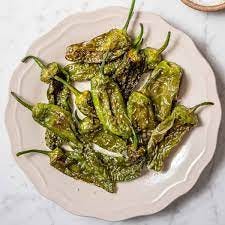Since social media has made us so curious about one another, the manly meat eaters from last week’s Tabled made me wonder about the percentage of vegetarians globally. In the UK, it’s 14 percent. That’s far higher than I thought it would be, given I knew it was only 4.2 in the States. The US hovers - and this was a greater surprise - above Thailand, which comes in even with its salads and vegetable sides at only 3.3 percent, and South Korea at 3 percent.
It’s no revelation to learn the proportion of the population in Asian countries that won’t eat anything which may directly or indirectly injure any sentient being is as high as 20 to 39 percent (India) and in Taiwan, 13-14 percent, and goes back centuries among Buddhists, Jains, and Hindus.
But even in nations associated with meat devouring, the number of vegetarians is high - 12 and 14 percent in Argentina and Brazil. Then there are the countries where the celebration of vegetables is part of the culture and/or related to agricultural practices and the economy. 19 percent of Mexicans are vegetarians, 13 percent of Israelis.
Spain and Portugal may participate in the so-called ‘Mediterranean diet’, but not when it comes to produce. They tiptoe into the charts at 1.4 and 1.2 percent respectively. But then, what vegetable have you ever seen on an Iberian menu beyond Padron peppers?
Even Greece isn’t high (4 percent) which surprises me, given that when I lived there, I foraged with the villagers for mountain plants to add to lentils and cultivated tomatoes, with rare home-made tzoudzoukakia sausages when neighbours came visiting wielding bottles of ouzo and bouzoukis. Lamb was a special treat only; fish was whisked straight off the boats to profitable markets.
I’m impressed, given how atrociously the Brits have been known to treat vegetables, that around 7.2 million are vegetarian.
Vegetarianism was not invented by hipsters with fashionable zip- and post-codes. It was first mentioned around 500 BC by Pythagoras, he of the impossible theorem which I might have grasped in school had I been taught by this ditty.
This is the time of year where veg abuse can really reveal itself. From Thanksgiving to Christmas and beyond, brassicas and root vegetables are subjected to over-cooking. Potatoes and parsnips may be saved by being roasted. But some roots like the poor carrot are sliced into roundels to be brought to the boil and turned into a ‘side’ not even suitable for motorway cafeterias and hospital trays. They deserve more respect.

The carrot may appear to you a common vegetable. But it has an impressive pedigree. Originally from Persia, an extensive region that also embraced Afghanistan where they were cultivated not for their roots but for their leaves and seeds, carrots came in purple or white, and even black. Seeds dating back to 2000-3000 BC have been found in Switzerland and Southern Germany. 1st century AD records reveal the Romans ate a root called pastinaca. But I suspect that is more likely the parsnip because the Russian for that is pasternak - spelled ‘пастернак’. Good for a Christmas pub quiz question and almost as much of a deflator as Casanova translating into Newhouse, did you know Russian poet and novelist Boris Pasternak is actually Boris Parsnip?
The carrot the Moors introduced into not-very-vegetarian Spain in the 8th century was probably still purple, as were the roots from West Asia and India in the 10th century.
Although there’s pictorial evidence of orange carrots in 512 AD, it was the Dutch who bred an orange cultivar, hybrid of a yellow carrot, at the turn of the 18th century, in honour of the era’s Dutch flag and ruler, William of Orange. Today’s reversion to the rainbow assortment of heirloom carrots in red, purple, yellow and white can probably be traced back to millennial foodies at the turn of the 21st century AD.
My mother only ever sliced carrots lengthways and always cooked them slowly in butter with a half cupful of stock under a cover until they had begun to caramelise and catch a little around the edges and the stock had evaporated. For an even more unctuous version, she would first soften a few sliced shallots in the butter before adding the carrots.
But if you haven’t yet settled on a Christmas present or stocking filler for yourself, I heartily recommend this little implement to punch your carrot life up several notches.
It transforms a mixed leaf vegetable salad with just the right amount of crunch. It modernises coleslaw. It even makes a perfectly good Carottes Râpées, the Parisian raw grated carrot salad dressed in lemon juice, if you don’t own a Cuisinart to shred your roots. It is crucial in a South East Asian stir fry or for this Chinese Crispy Shredded Beef.
1 egg
50g/⅓ cup cornflour
½ teaspoon salt
400g/14 oz rump steak, shredded
125ml/½ cup peanut or vegetable oil
2 carrots, scrubbed and sliced into slivers with the brilliant implement
1 clove garlic, finely chopped
1 chilli, finely sliced
2 tablespoons tomato puree
2 tablespoons caster sugar
2 tablespoons Chinese black vinegar (your own vinegar may substitute)
1 tablespoons light soy sauce
2 spring onions/scallions, finely sliced on the diagonal
steamed rice, to serve
Make a batter with the egg, cornflour and salt. Fold in the beef to coat the strips thoroughly then set aside.
Heat the oil over high heat in a wok or saute pan. Fry the carrot matchsticks until they begin to shrivel and catch, 3-5 minutes. Remove to paper towels with a slotted spoon.
If necessary, add a little more oil and cook the beef in batches till browned, stirring thoroughly so they don’t stick, then remove them, too, to paper towels.
In a bowl, whisk together the tomato puree, sugar, vinegar and soy sauce.
Pour all but 1 tablespoon of oil from the wok and reheat over high heat.
Add the garlic and chilli and fry 30 seconds stirring constantly. Return the carrots and beef to the wok. Pour over the contents of the bowl and stir to coat everything. Turn off the heat and fry briskly 1-2 minutes. Sprinkle over the sliced scallions and serve direct from the wok over steamed rice.
One of my favourite salads that goes well with this and also employs the brilliant implement is this fresh ginger, carrot and cabbage salad. Although that calls for grated carrot, it’s better with the matchsticks.
Should you be considering Bruno’s Cookbook for a Christmas present, Bold Fork Books, Washington DC’s first and only cookbooks only bookshop has signed copies. Baffled? If you’d like to know more about the cookbook, have a listen here to Diane Rehm’s interview.









If you add a bit of honey to your mother's recipe for carrots, you have an Ashkenazi classic tzimmes that I grew up eating. My non-Jewish husband, who dislikes most vegetables, loves it.
I really enjoyed your and Matin's interview with Diane Rehm-- a blast from the past, as I was a regular listener to the Friday News Roundup on WAMU.
Love fact Russian for parsnip is Pasternak. So author of Dr Zhivago is Boris Parsnip. French supermarkets sell grated carrots in little pots which is instant lunch